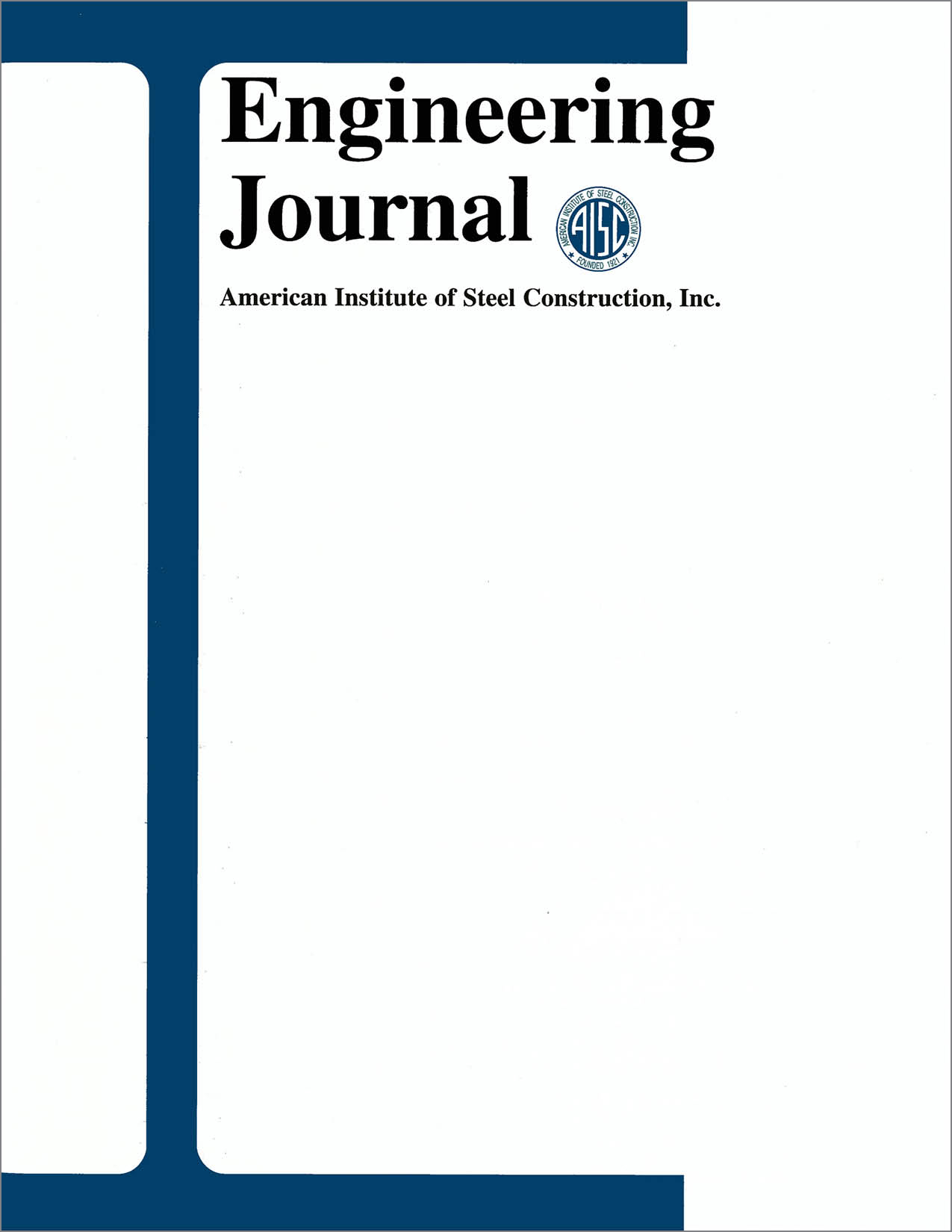Influence of Bolt-Line Eccentricity on WT Tension Member Capacity
DOI:
https://doi.org/10.62913/engj.v39i3.783Abstract
This paper focuses on the influence of connection eccentricity (as defined by the perpendicular distance between the bolt-gage line and the elastic neutral axis) on the capacity of WT sections designed as tension members. A series of eight Grade 50, WT6x7 short tension member specimens (specimens were 36 in. in length) were tested to determine their ultimate load capacity. The experimental tests were performed by loading the specimens through the stem in direct tension. The WTs were fabricated with varying edge distances (4 total nominal edge distances) and with both punched and drilled holes. The experimental failure loads are compared with the design resistance predicted by the AISC Load and Resistance Factor Design Specification for Structural Steel Buildings, hereinafter referred to as "the specification" (AISC, 1993). It is shown that sections with small eccentricities perform reasonably well when compared with predicted resistance. However, as the eccentricity is increased, the specification is unconservative in predicting the failure load.

